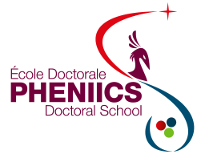Orateur
Mlle
Yiman YAN
(IPN Orsay)
Description
A precise description of fission is essential for reactor safety, to assess the feasibility of waste transmutation and for the design of a next generation of reactors. However, despite a long history of work, the theoretical description of nuclear fission - one of the most complex processes on the nuclear scale - is still far from complete. In addition, information of fission of exotic actinides is rather limited since they are not accessible in standard experiments.
Fission fragments have significant impacts on reactors: they are the source of delayed neutrons; they are responsible for the poisoning of the core; and they are dominant source of residual decay heat. Besides, isotopic yields (mass and nuclear charge) of fission fragments are crucial inputs for simulation codes and would largely constrain the fission modeling. Nevertheless, no precise data on the isotopic yields is available since it is very difficult to identify the nuclear charge with good resolution.
SOFIA (Study On Fission in Inverse kinematics with Aladin) is an international collaboration program aiming at simultaneously measuring the mass and nuclear charge yields of both fission fragments over a range of fissioning nuclei. Inverse kinematics is used: the relativistic fissioning system (for example 238U) is the beam, and in-flight fission leads to high-velocity, forward-focused fission fragments which can then be identified in a recoil spectrometer. Also, fission of neutron-deficient actinides and pre-actinides can be studied by fragmenting a 238U beam and selecting fragments to form a secondary beam. Fission is induced by electromagnetic interaction rather than collision to let the excitation energy of the nuclei comparable to that in the fission triggered by neutron capture in reactors, thus making experimental data relevant to applications.
The nuclear charge is directly determined by the energy loss measured in an ionization chamber. Then the mass is deduced from measured time of flight, the magnetic rigidity and the nuclear charge.
Last SOFIA experiment was conducted in October 2014 in GSI in Germany. Fission fragment distributions of 236U, compound nuclei formed when a neutron is captured by 235U, were measured.
In the poster, I will present the identification map of the secondary beam and the elemental yield of fission fragments of 236U.
Auteur principal
Mlle
Yiman YAN
(IPN Orsay)



